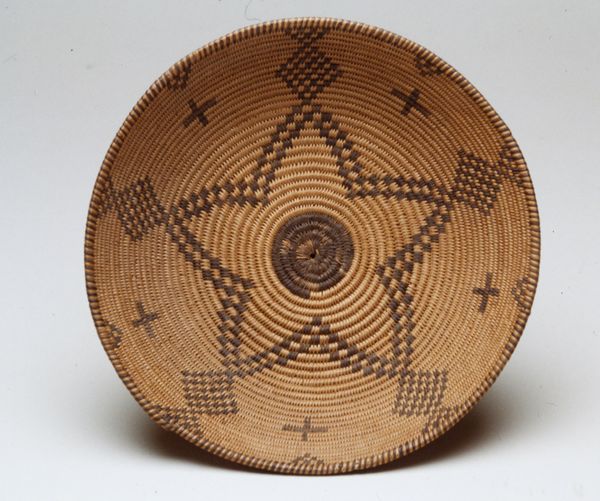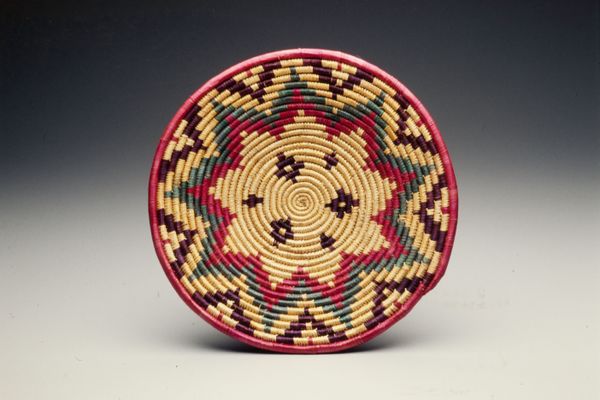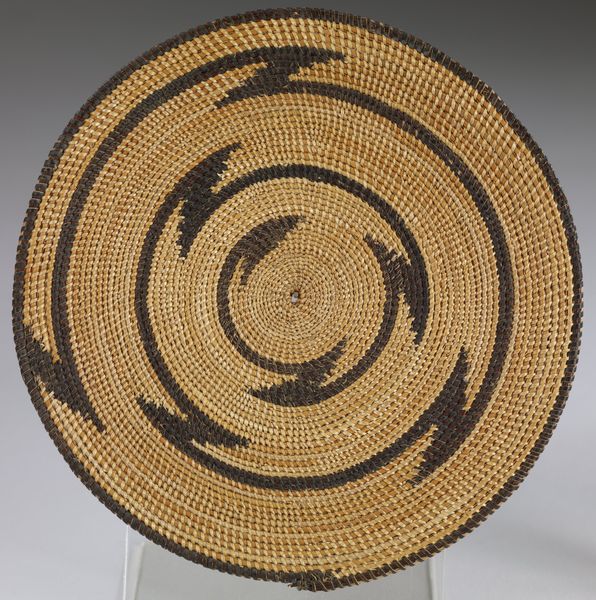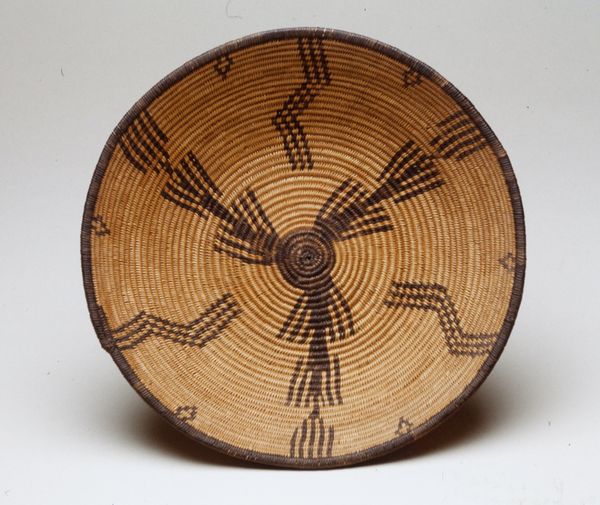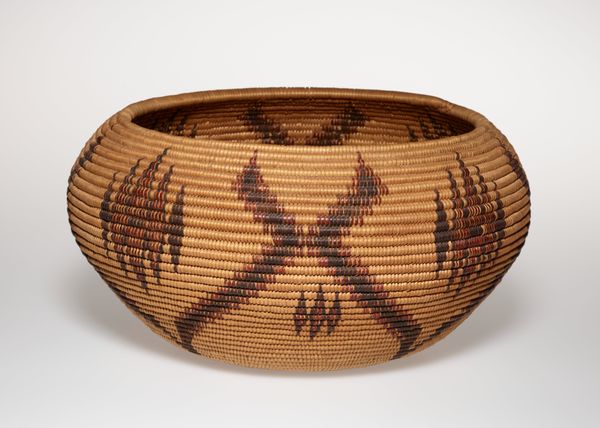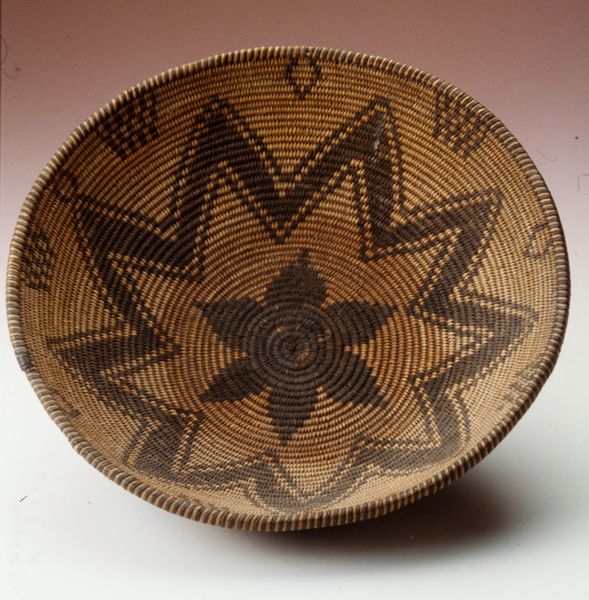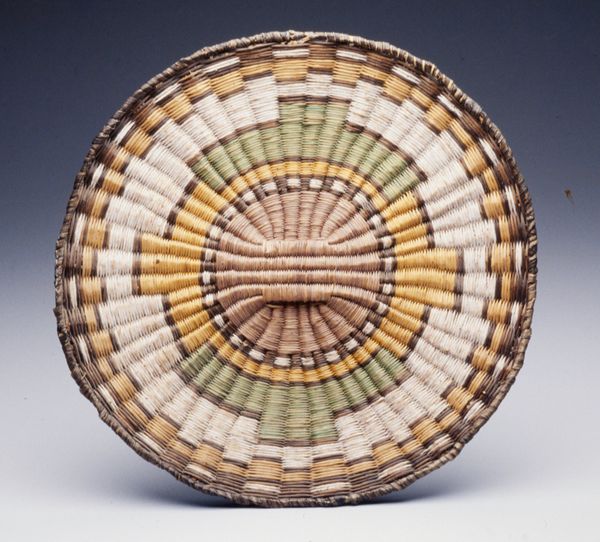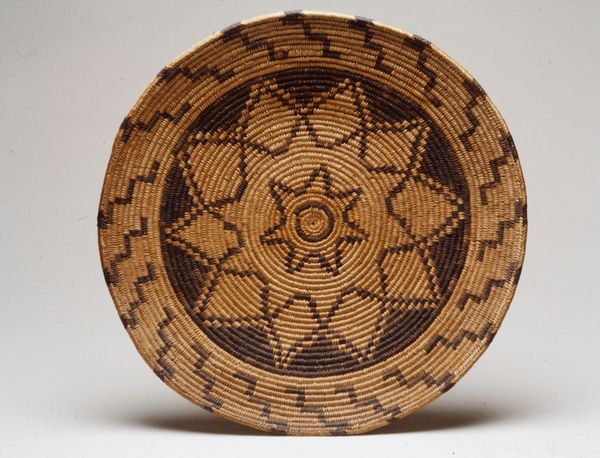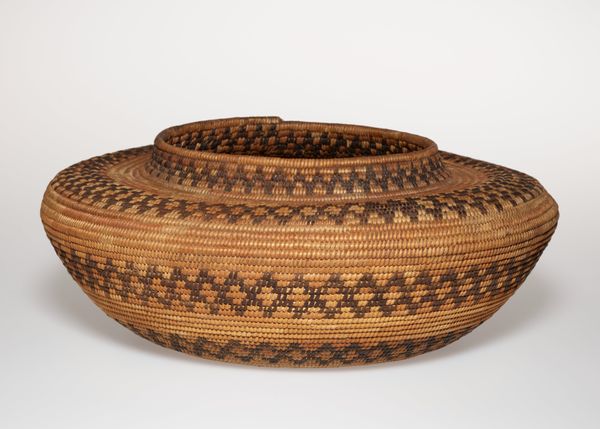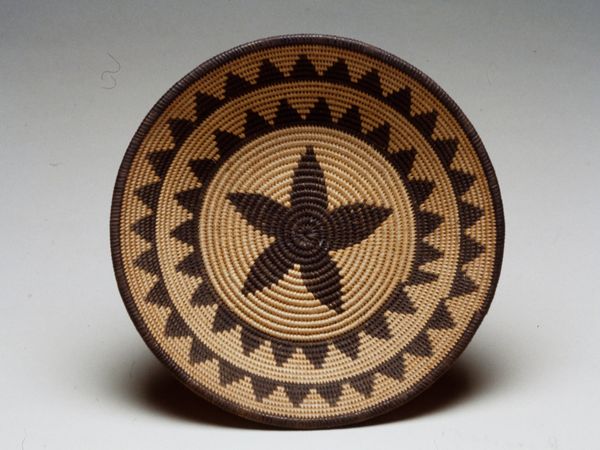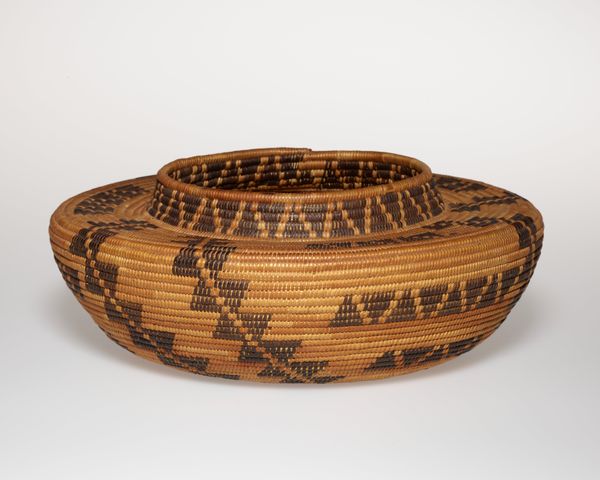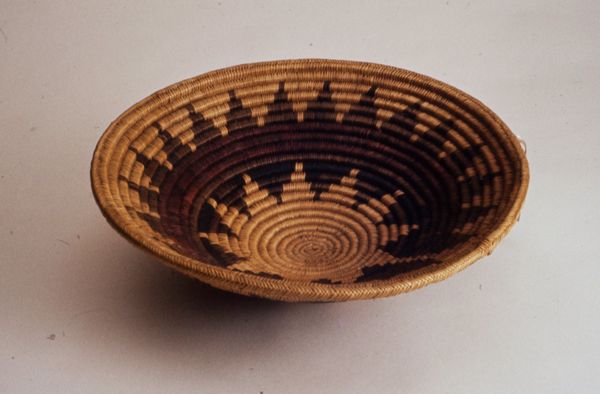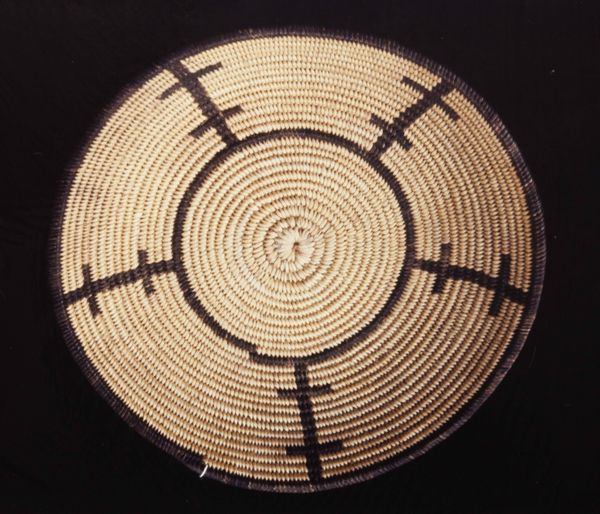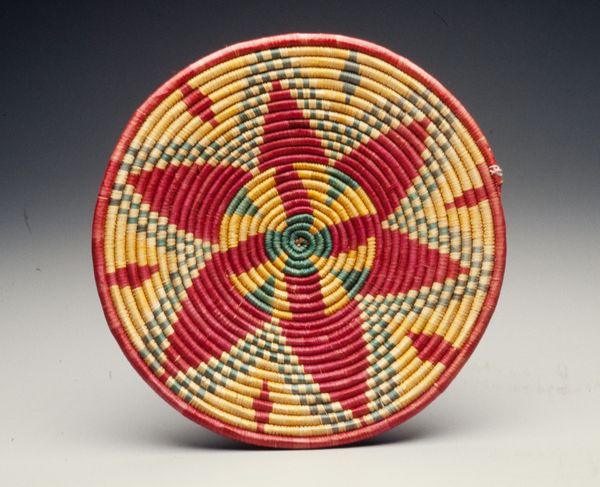
fibre-art, weaving, textile
#
fibre-art
#
weaving
#
textile
#
geometric
#
warm palette
#
indigenous-americas
Dimensions: 16 1/4 x 16 1/4 in. (41.28 x 41.28 cm)
Copyright: Public Domain
This basket was created by a Navajo (Diné) artist, and is now housed at the Minneapolis Institute of Art. The immediate impression is one of concentric order, the tightly woven spirals creating a mesmerizing sense of depth. The basket's design is divided into clear bands defined by color and pattern: a natural center gives way to a ring of geometric shapes in warm browns and blacks, followed by a band in muted reds. These shapes interrupt the circular flow, destabilizing any fixed reading. The careful gradations of color combined with sharp geometric designs produce a piece that seems to vibrate. The structure suggests a tension between order and disruption. It invites semiotic interpretation, acting as a cultural artifact embedded with meaning, tradition, and individual expression, all while challenging us to look beyond the surface.
Comments
minneapolisinstituteofart almost 2 years ago
⋮
Although making baskets is not a vital role of Diné culture, baskets serve many important functions in their ceremonies. The Utes and Southern Paiutes, for example, have made wedding baskets in great quantity for trade with the Diné since before 1890. They are shallow in form with radiating designs and are made from sumac. The colors and designs of these baskets have symbolic meaning. The center represents Diné ancestry and the beginning of life. Moving outward from the center, the black symbolizes the rain clouds or darkness. The red concentric bands are the red and pink of the sky and sun. The outermost white band is said to represent the tribe's population growth. The narrow pathway breaking the encircling bands creates an opening from the center to the outer edge of the basket and is called the shipapu. It symbolizes the path of communication between the ancestral and present worlds and orients the basket to the east, in honor of the rising sun.
Join the conversation
Join millions of artists and users on Artera today and experience the ultimate creative platform.
